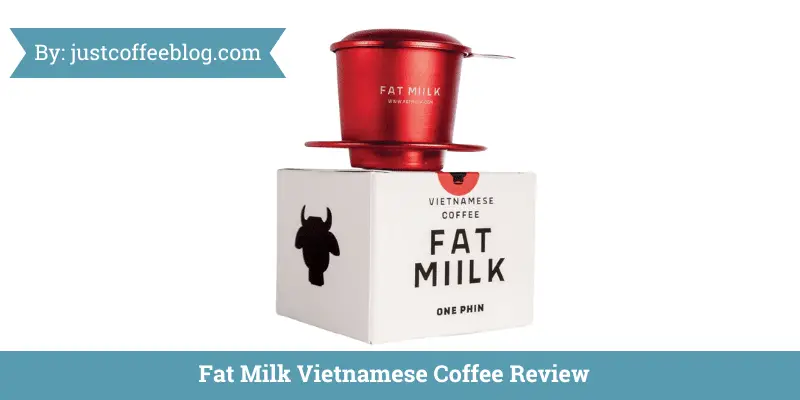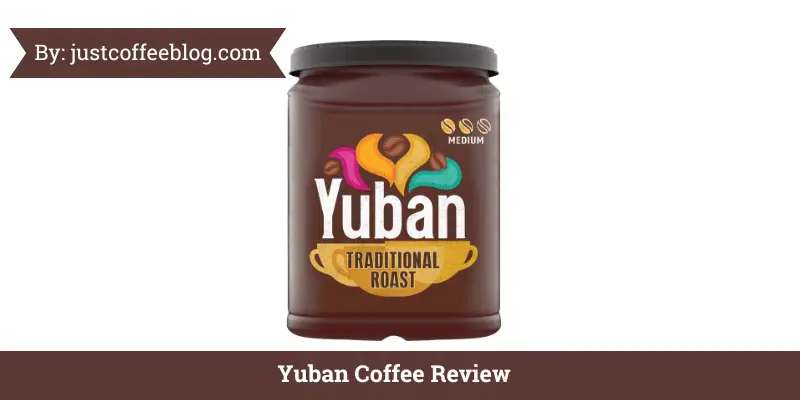The world of coffee is large and diverse, and every cup reveals something about its history, culture, and artistic process of brewing. A star that has captured the attention of the coffee world, Fat Milk Vietnamese Coffee, stands out among the plethora of tastes and preparation methods. This variety has drawn interest and respect for its distinctive fusion of tradition and innovation. We give the most thorough analysis of Fat Milk Vietnamese Coffee in our effort to elucidate its charm and personality. Join us as we study every aspect of this delicious beverage as we drink, enjoy, and explore it.
Table of Contents
1. The Rich History of Vietnamese Coffee

a. The origins: From French colonial roots to Vietnamese staple
Vietnamese coffee has its origins in the French colonial period and is a wonderful mixture that plays tricks on the taste by balancing strong coffee with sweetened condensed milk. French colonists carried their deeply ingrained coffee culture with them when they invaded Vietnam in the late 19th century.
The tropical heat made it difficult to get fresh milk, so they had to use a shelf-stable substitute instead: sweetened condensed milk. But the Vietnamese, who have always been inventive, didn’t merely accept the French aesthetic; they gave it a distinctively Vietnamese twist. They used a special drip filter called a “phin” to include slow-drip brewing, which enabled the flavors to mellow and mingle and produced a drink that is both strong and complex.
b. The significance: More than just a beverage, a cultural symbol
But for someone who has experienced Vietnamese culture, this coffee is more than just a beverage; it is a symbol of the country’s resiliency, flexibility, and intense cultural pride. Vietnamese folks, both young and elderly, often meet at street corners or in cozy cafes early in the morning to talk about their plans for the day while sipping hot or iced coffee. It becomes a ritual, a time of awareness despite the chaos, to wait for the coffee to trickle, mix in the thick condensed milk, and then take a sip.
The coffee also offers a narrative about the history of the nation, including colonialism and the war for independence, as well as about tenacity and the capacity to make the most of any given circumstance. When you drink Fat Milk Vietnamese Coffee, you’re consuming a portion of Vietnam’s soul, a piece of its colorful history, and a window into its vivid culture. You’re not only enjoying the rich combination of coffee beans and creamy milk.
2. Unraveling the Magic Ingredient: Fat Milk

a. What is fat milk? Understanding its unique properties
The key ingredient that gives Vietnamese coffee its characteristic richness and creaminess is fat milk. However, what precisely is this silky element? Despite what its name would suggest, fat milk is not just milk with a high-fat content. It is a richer, creamier kind that is often made by using a unique method of condensing normal milk. The inherent sugars and fats in milk are amplified by this concentration, creating a thick and strongly delicious final product.
For lovers of Vietnamese coffee, fat milk is a preferred option due to its consistency and flavor. The layers of depth and a hint of sweetness enhance the coffee experience. In addition to coffee, its distinct qualities have made it a mainstay in many sweets and cuisines, demonstrating its adaptability and vast popularity.
b. Traditional versus modern: How fat milk compares to condensed milk
Vietnamese coffee has a timeless allure thanks to sweetened condensed milk, which has a syrupy texture and a sweet flavor. However, a minor change in the flavor and consistency of this well-known beverage is perceptible with the introduction of fat milk.
Both ingredients work to highlight the richness of coffee, although they vary in subtle ways. The richness of the sweetened condensed milk permeates the whole dish, sometimes obscuring the coffee’s harsh undertones. Contrarily, fat milk has a little more restricted sweetness. It allows the rich character of the coffee to show through by balancing it out rather than overpowering it. Every sip is a perfect ballet of bitter and sweet, creamy and robust flavors because of this harmony.
Moreover, fat milk offers a choice that seems less processed in a society that is continually seeking healthier and more natural flavors. It honors the past while embracing the future and perfectly reflects the current palate’s search for natural tastes and health advantages.
3. The Art of Brewing a Perfect Cup of Fat Milk Vietnamese Coffee

a. Essential equipment: From the phin filter to the right mug
The correct equipment is necessary to begin recreating the genuine sensation of drinking Vietnamese coffee laced with the richness of fat milk. Both the voyage and the final product are important aspects of the brewing process.
1. Phin Filter
The foundation of the brewing process is the phin filter, a traditional drip filter used in Vietnam. It is made of metal, often stainless steel or aluminum, and has four parts: a press, a brewing chamber, and a circular perforated plate. Every last bit of flavor is taken from the coffee grounds thanks to the Phin, which fits above your cup and allows for a leisurely drip.
2. Coffee Beans
Robusta beans are best because of their strong taste and increased caffeine concentration; they are often used in Vietnam. For a uniform extraction, roughly grind the ingredients.
3. Mug
In addition to serving as a vessel for the coffee, the cup contributes to the overall aesthetic of the experience. The layers of beauty in traditional Vietnamese coffee are often shown in transparent glasses, but a thick-walled ceramic cup holds heat better and provides a comfortable grip.
4. Fat Milk
Fat Milk is the main component. Make sure it’s fresh and came from an established company. The experience may be made or broken by its quality.
b. Step-by-step guide: Mastering the brewing process
- Start by heating your water to 195°F (90°C), just as it is about to boil. Add 2-3 tablespoons of fatty milk to the bottom of your cup in the meanwhile.
- Coffee grounds: Fill the brewing chamber of the Phin filter with 2 to 3 teaspoons of coarsely ground robusta coffee.
- Pour some hot water into the Phin to moisten the coffee beans first. The coffee might blossom at this first stage, producing its complex tastes and fragrances.
- Main Pour: Add extra water to the top of the Phin after allowing the coffee to bloom for around 30 seconds. Put the filter’s cover on and watch the magic unfold. It should trickle gradually, usually taking 4-5 minutes.
- Stir well to combine the coffee and fat milk when the coffee has done pouring. Then, enjoy. Take a minute to savor the layers of taste and history in each sip of the rich, creamy mix.
- Making the ideal cup of Fat Milk Vietnamese coffee making is an art, but anybody can become skilled at it with time and effort. Enjoy the process and let it take you back to the vivacious Vietnamese streets with each step.
4. Taste Test: Comparing Fat Milk Vietnamese Coffee to Other Variations

a. Flavor profile: The delicate balance of bitter and sweet
Although each kind of Vietnamese coffee has its own taste profile, there is something particularly alluring about the Fat Milk variety. As soon as you take that first drink, a variety of emotions start to play out.
Traditional Vietnamese coffee prepared with condensed milk has a strong sweetness that often overpowers the robusta beans’ natural bitterness. Although it is a taste that many people have grown to adore, the Fat Milk version offers a more sophisticated palate experience. The fat milk’s inherent richness delicately increases the coffee’s bitterness without overpowering it. Similar to a symphony, each note—whether bitter or sweet—has its opportunity to shine.
This delicate harmony broadens the attraction of Fat Milk Vietnamese Coffee. This coffee seems to appeal to everyone, regardless of whether your preference is for the milk chocolate’s soft sweetness or the bittersweet allure of dark chocolate.
b. Texture and consistency: The creamy richness that sets it apart
When contrasting Fat Milk Vietnamese Coffee with its rivals, one of the first things you’ll notice is its velvety smoothness. While fat milk adds a cream-like texture that is both decadent and filling, condensed milk adds a syrupy consistency. It’s comparable to the difference between smothering a dish with thick custard or sprinkling it with honey.
The unmatched creamy richness of fat milk is evident in the weight of the coffee on your tongue, the way it covers your palate and the lasting aftertaste. It’s more than simply a beverage; it’s an adventure. Every sip feels like a special treat, elevating even the most routine parts of the day.
When compared to other options, the Fat Milk Vietnamese Coffee stands out for both its flavor and the sheer richness it offers.
5. Health Implications: Is Fat Milk Vietnamese Coffee for Everyone?

a. Nutritional breakdown: Calories, fats, and sugars
While the rich flavor and creamy texture of Fat Milk Vietnamese Coffee are what makes it so alluring, it’s important to understand its nutritional profile, particularly if you plan to consume it often.
1. Calories
Fat Milk Calories Due to the concentrated nature of fat milk, Vietnamese coffee often has more calories than its conventional cousin. Depending on how much fat milk is used, a typical serving may have between 150 and 250 calories.
2. Fats
As implied by its name, fat milk contains more fats. These are largely saturated fats, which, when ingested in moderation, maybe a healthy component of a diet.
3. Sugar
Lactose, a naturally occurring sugar, is present in fat milk since it is a concentrated form of milk. Even while it is less sweet than the conventionally used sweetened condensed milk, it nevertheless adds to the total sugar level. The amount of sugar in a normal serving may range from 10 to 15 grams, once again dependent on the volume of fat milk.
b. Benefits and concerns: Weighing the pros and cons of daily consumption
Benefits:
1. Rich in Nutrients
Fat milk still has a lot of the healthy elements like calcium, vitamin D, and protein that are included in ordinary milk. These may support both general well-being and bone health.
2. Natural Sweetness
Since fat milk doesn’t have the additional sugars often present in sweetened condensed milk, it is naturally sweet.
3. Satiety
The coffee’s creamy richness may make you feel full, which may lessen your desire to snack or overeat later.
Concerns:
1. Calorie Dense
Consistent consumption may help a person consume more calories each day, which, if not balanced with exercise, might result in weight gain.
2. Saturated Fats
High consumption of saturated fats has been associated with cardiac problems. If you drink this coffee every day, it’s important to watch your intake.
3. Not Suitable for Lactose Intolerant
Not Recommended for Lactose Intolerance: The lactose in fat milk may cause digestive problems for those who are lactose intolerant.
Despite being a delicious feast for the senses, Fat Milk Vietnamese Coffee is best consumed in moderation, as with all luxuries. If you want to have it often think about modifying the amount of fat milk to suit your nutritional requirements.
6. The Final Verdict: Is Fat Milk Vietnamese Coffee Good To Go

On a quest to discover the world of fatty milk, It has been nothing short of fascinating to drink Vietnamese coffee. Every aspect of this beverage has a tale to tell, from the complex brewing process to its rich cultural history. The issue of whether you should make this your go-to coffee still lingers when all is said and done.
1. Taste and Experience
There’s no denying that Fat Milk Vietnamese Coffee has a distinct flavor profile and sensory experience. For people who like sweetness but don’t want to be overwhelmed, it’s a nice medium ground. The beverage’s silky, creamy texture gives a cozy, indulgent experience that may brighten mornings and calm afternoons.
2. Health Considerations
When it comes to diet, moderation is crucial when it comes to treats. Although the beverage has certain advantages, such as being a source of important nutrients, it is also high in calories and fats. Before incorporating it into your routine on a daily basis, it is advisable to speak with a nutritionist if you have any special health issues or dietary limitations.
3. Cultural importance
Drinking a beverage that bears the weight of history and cultural importance has an intangible worth. Each cup pays homage to the tenacity and inventiveness of the Vietnamese people by fusing old traditions with cutting-edge flavors.
4. The Verdict
Fat Milk Vietnamese coffee is more than simply a beverage; it’s an encounter, a narrative, and an illustration of how tastes and civilizations have changed through time. While it may not be suitable for everyone, particularly those managing their calorie or fat intake, coffee lovers and culture vultures should surely give it a try.
So, can we proceed now? Yes, but with a pinch of moderation and a dash of attention. Make sure it fits with your own health objectives and lifestyle, whether it’s a daily practice or an occasional indulgence. The finest coffee, after all, is one that appeals to the spirit as much as the senses.
6. Frequently Asked Questions
How does Fat Milk Vietnamese Coffee differ from the traditional version?
The Fat Milk type of Vietnamese coffee employs fat milk instead of the sweetened condensed milk that is used in typical versions, giving it a creamier texture and a unique taste balance between bitterness and sweetness.
Is fat milk the same as whole milk?
No, fat milk has a creamier consistency and is often richer than regular whole milk. It may also have a larger proportion of milk fat.
Where can I buy Fat Milk Vietnamese Coffee?
It is currently available in many specialty coffee shops, but you can also make it at home by obtaining premium robusta coffee beans and fat milk from nearby shops or internet merchants.
How does the caffeine content in Fat Milk Vietnamese Coffee compare to other coffee types?
The utilized coffee beans are the main factor affecting the caffeine content. Robusta beans, which typically have more caffeine than arabica beans, are the ones used in traditional Vietnamese coffee. The amount of caffeine is not greatly changed by the addition of fat milk.
Is Fat Milk Vietnamese Coffee suitable for lactose-intolerant individuals?
Fat milk may not be suited for persons who are lactose intolerant since it includes lactose. Alternatives to fat milk, however, include lactose-free varieties.
Can I make Fat Milk Vietnamese Coffee using a regular drip coffee maker?
Although you may use a standard drip coffee machine, it’s advised to use a Phin filter, a traditional Vietnamese drip filter, for the most genuine experience.
What’s the best coffee-to-milk ratio for Fat Milk Vietnamese Coffee?
2-3 teaspoons of coffee to 2-3 tablespoons of fat milk is a usual ratio, but you may change it to suit your tastes.
Does Fat Milk Vietnamese Coffee have more calories than other coffee variants?
In comparison to other coffee varieties, particularly those without additional creams or sugars, Fat Milk Vietnamese Coffee might have a higher calorie value due to its fuller composition.
Why is Fat Milk Vietnamese Coffee becoming increasingly popular?
Vietnamese coffee is a popular beverage among coffee lovers and those seeking a new coffee experience due to its distinctive taste balance, creamy consistency, and rich cultural history.




